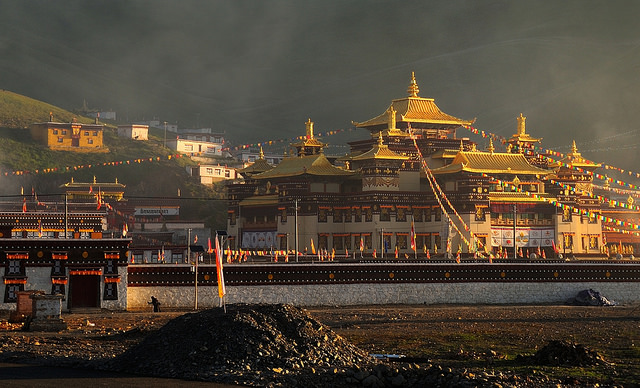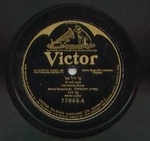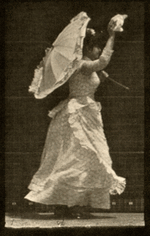-



Le couple ENERGETIQUE YIN YANG
L'homme de la pensée antique chinoise est une pile, soumis aux lois énergétiques du TAI JI (diagramme aux deux poissons entrelacés ci dessous), système énergétique ou " principe universel, ultime principe… " régulant microcosme et macrocosme.Les élans de ce système naissent d'une différence de potentiel à l'intérieur même d'un couple énergétique dit YIN YANG.
Yin matière (élan énergétique de plus ou moins grande densité représentant la rétraction et l'absorption de l'énergie) et
Yang énergie (élan énergétique de plus ou moins grande densité représentant l'accroissement et l'expansion de l'énergie) se génèrent l'un l'autre dans des relations d'opposition, d'alternance, de relativité, d'équilibre et de complémentarité.

Quand on regarde le symbole du yin (noir) et du yang (rouge), on voit qu'ils s'imbriquent, marquant leur relation et leur inter-relation. Les deux graines, rouge dans le yin et noire dans le yang, signifient que rien n'est tout à fait yin ou yang, que dans chaque état subsiste l'autre état sous forme de potentialité.
Les PRINCIPES d'Opposition, d'Alternance, de Relativité, d'Equilibre et de Complémentarité
YIN et YANG se génèrent l'un l'autre suivant les principes :
d'Opposition :
Il existe des moments yin comme l'hiver, la nuit, le sommeil ….D'autres sont yang comme l'été, le jour, l'action …. A chacun correspond une attitude appropriée. Par exemple, à la nuit yin, le repos réparateur, et au jour yang le dur travail. Rien n'empêche de dormir le jour, mais on se repose beaucoup mieux la nuit. Si l'Energie Yang est une force agissante (en mouvement) d'expansion & d'accroissement, l'Energie Yin est une force de condensation et de repli.
d'Alternance :
Après la nuit succède le jour, puis la nuit. Le Yang succède au Yin avant que s'effectue un retour au Yin. Tout ce qui est yang finit par se changer en yin et inversement. Ce mouvement perpétuel est fondamental. Le diagramme du TAI JI est à considérer comme non figé et tournant sur lui même car en mouvement dans le temps. La phrase originelle du Tao Te King est : " 1 Yin, 1 Yang c'est le Tao ". Si l'on pointe le doigt sur le diagramme du TAI JI pour signifier un instant T, une traduction correcte devient " 1 coup Yin, 1 coup Yang, c'est comme cela que tout fonctionne ", mettant en avant les notions d'alternance et de relativité.
de Relativité :
La pensée chinoise est très éloignée de la notre. Nous sommes aussi catégoriques que les Chinois se refusent à l'être. C'est une conception nuancée des choses et des événements. Pour eux toute la vie s'organise autour de situations, d'évènements, de personnes qui ne sont jamais tout à fait bons ou tout à fait mauvais, ni tout à fait toujours les mêmes. Ils parlent pour cela de yin et de yang, et du rapport entre l'un et l'autre.
Yin n'est pas sombre, c'est un mouvement d'assombrissement. De même Yang n'est pas clair, mais mouvement d'éclaircissement. L'un et l'autre ne se réalisent qu'à l'intérieur d'une dynamique énergétique qui les accouple. Lorsque l'on veut qualifier l'un des deux termes par rapport à l'autre, il est nécessaire de le faire dans un cadre référencé.
Prenons une situation comme exemple dans laquelle deux enfants s'expriment : Toa est une fille d'1,20 mètres, debout les bras ouvert. Tao est un garçon d'1,30 mètre, assis en tailleur les bras repliés. Comparons-les, l'un par rapport à l'autre, dans divers référentiels :
- Référentiel taille (+ petit / + grand) => Toa est Yin, Tao est Yang
- Référentiel sexe (féminin / masculin) => Toa est Yin, Tao est Yang
- Référentiel posture (+ replié / + ouvert) => Toa est Yang, Tao est Yin
- Référentiel hauteur totale par rapport au sol (+ bas / + haut ) => Toa est Yang, Tao est Yin
d'Equilibre et de Complémentarité :
Matière Yin et énergie Yang se génèrent l'une l'autre. Yang s'élève comme le feu, il réchauffe et bouge. Yin descend comme l'eau de pluie, il rafraîchit et stagne. Yin et Yang bougent sans arrêt dans le corps de l'homme et il faut utiliser ces deux forces pour entretenir et conserver leur énergie, les maintenir ensemble afin de rétablir l'harmonie lorsqu'il y a maladie.
-
 Les bases
Les basesLe Yin et le Yang sont les forces qui régissent l'univers. Elles sont à la fois contraires et complémentaires. L'équilibre est perpétuel et sans cesse renouvelé.
Dans la représentation des forces Yin et Yang (taïji), on remarque le germe Yin au sein du Yang et de même, le germe Yang au sein du Yin.
Ce germe grossi jusqu'a remplacer la force qui le contient.
La multiplicité des phénomènes de l'univers, visibles et invisibles, sont le résultat de l'interaction du Yin et du Yang.
Le Yin 



Exemples Yin - Obscur
- Terre - Nuit - Féminin - Froid - Faible - Souple - Substance - Dépendant - Passif - Repos - Immobilisation - Pair - Intérieur 
Le Yang 


 Exemples Yang
Exemples Yang- Lumineux - Ciel - Jour - Masculin - Chaud - Fort - Rigide - Essence - Indépendant - Actif - Action - Mouvement - Impair - Extérieur
-
-
-
-

With an average elevation of more than 12,000 feet, Tibet is the highest country on earth, and is appropriately termed the “Roof of the World.” The planet’s highest mountain range, the Himalayas, soars into the Tibetan sky above rushing rivers, beautiful lakes, and high plains.
Intrepid travelers discover the beauty of Tibet on foot, by raft, and over dramatic, high-altitude roads. Treks through lower passes and foothills of the Himalayas and Karakoram make for a memorable adventure, and the hardiest hikers can even trek to the Mt. Everest base cam

p, where mountaineers launch assaults on the world’s highest summit.

Yet the natural wonders are only one aspect of this fascinating land.

Tibet’s rich cultural and religious heritage awaits the curious visitor, with visits to ancient monasteries and a host of other opportunities to learn about the Tibetan Buddhist tradition.
Travelers often begin their exploration of the country not long after arrival in Lhasa, where the 1000-room Potala Palace is built on a cliff within the city.
Itineraries
Tibet Explorer
-
-
-

Sunrise over Sershul monastery, Tibet 2014
Sershul monastery has undergone a metamorphosis in the last five years. Not only in concrete, but also the traditional Tibetan construction has not forgotten it was done right.
Sershul Tekchen Dargyeling སེར་ཤུལ་ ཏེཀ་ ཆེན་ དར་ གྱེ་ གླིང་ is an important monastery of the Gelukpa School, located 20 km west of Deongma, on the right side of the road.
This is currently the largest monastery in Sershul county, with 1200-1300 monks divided into six colleges, under the guidance of the youthful but charismatic Drukpa Rinpoche.
The rain retreat festival held in August is a magnificent spectacle, attracting nomad communities.
The hills and grasslands around the monastery are sparse and spacious. The complex was founded as a branch of Chunkor but soon outgrew the latter. The recently restored buildings at Sershul, which are all near the motor road, include the Tsokchen (assembly hall), the Jamkhang (Maitreya temple), the Gonkhang (protector temple), the Dewachen Lhakhang (Amitabha temple), the Mentsikhang (where Mipham Rinpoche`s tradition is maintained), the college, a Mani Wheel chapel (containing three wheels constructed by the father of the present Drukpa Rinpoche) and a small guesthouse.
A new Tsongkhapa Lhakhang, resembling a giant cathedral, has been constructed below the main complex, and was due for completion and consecration on 12 December, 2008.
www.footprinttravelguides.com/c/2848/tibet/&Action=pr...
Sunrise over the Bayan Khar Mountains, Tibet 2014
Bayan Khar བ་ཡན་མཁར་ county
There used to be 44 temples or monasteries within the county the most historically important being Jakhyung and Dentik. 27 of these survived the Cultural Revolution, having been used as granaries and storerooms. At present, the county has 34 monasteries,4 Nyingmapa and 19 Gelukpa.
Bayan Khar county capital town is Hualong.
Area: 2.732 sq km.
www.footprinttravelguides.com/c/2848/tibet/&Action=pr...
-

The main attraction in Tsigortang county is Drakar Tredzong Monastery. The "White Monkey Fortress" is one of the most famous monasteries in Amdo and brings many pilgrims each year. The monastery currently has around 400 monks, though in the past it has had close to 1000. Located at the base of a 5000m/ 16,400 ft. mountain, Drakar Tredzong has one of the few evergreen forests on the northern Tibetan Plateau. Wildlife such as wolves, deer, foxes, gazelle and a large variety of birds all live above the monastery. There is a pilgrimage kora winding around the mountain that takes 5 or 6 hours to complete. The mountains above the monastery offer abundant hiking routes and have excellent views of the area.
The Tsigortang area is very poor. There is a simple Tibetan style hotel located near Drakar Tredzong Monastery and some slightly better accommodations in the county town. Even though this area is poor, if you are interested in a remote Tibetan adventure, this area will not disappoint you.
kekexili.typepad.com/life_on_the_tibetan_plate/2009/03/xi...
Founding (1820-1911 (probable)) >བྲག་དཀར་སྤྲེལ་རྫོང་ཐོས་བསམ་ཡོན་ཏན་དར་རྒྱས་གླིང་།
> Drakkar Treldzong Tösam Yönten Dargyé Ling
> brag dkar sprel rdzong thos bsam yon tan dar rgyas gling
Read more: places.thlib.org/features/iframe/22977#ixzz1nOhlilesSOURCES
Jan Reurink

On the vast Peltang plain some 20 km south of Jyekundo town also called Yushu, surrounded with high peaking mountains, there was a Tibetan Horse race festival.

Jyekundo region in the northwest region of Kham , known locally as Gawa ག་ ཝ་,..The county capital is located at Jyekundo, which has a newly opened airport, Area: 13,784 sq km.

A mantra being carved into a cliff near Hor.
On Facebook at www.facebook.com/RemoteAsiaPhoto.
More on my website www.remoteasiaphoto.com.
sources Nick MAYO

Tibetan Family picnics in front of Sershul monastery, Tibet 2014
Food & Drink
Tibet’s high altitude means that it is difficult to grow many crops there. Barley is the most important and common crop and forms the basis of many Tibetan foods. Every day, many Tibetans eat tsampa, which is a dough made from barley flour. Other popular foods include wheat flour, yak meat, mutton, pork, butter, milk, and cheese. From barley flour Tibetans also make momos, which are small delicious dumplings filled with meat or vegetables.Mustard seed is also cultivated in Tibet, and therefore makes an appearance in many recipes.
Butter tea and barley beer (chang) are popular drinks in Tibet. For butter tea, the tea leaves are boiled in water, then strained and poured into a churn, where salt and butter are added. The tea has a thick buttery surface and a unique taste. Chang is thick and white and has a sweet and strong taste. Just like our beer, it is quite alcoholic, so for adults only!
The sacred Mountain Zhara Lhatse 5820m and the Jinlong Gonpa, Tibet 2014
High peaking above the graslands is the snow-covered peak of Mt Zhara Lhatse with a unique sharp pointed shape of 5820m hight.
This mountain is also strongly connected with the stories of Guru Rinpoche (Padmasambhava).
The Mountain Zhara Lhatse is located in Tawu county, while the village Lhagang is located in Dardo county from where this picture is taken.
Lhagang is surrounded by five holy mountains : Chenresig, Jambayang, Chana Dorje and Drolma, and to the north, the snow mountain called Zhara.
Because it is surrounded by these holy mountains, it is a special and blessed place.sources
reurinkjan

Motorbike for the whole family, Tibet There was an important lama visiting for some days in the Sershul monastery, so every Tibetan was dressed at it best and yes even the motorcycle was clean to shine. Tibetans came in big numbers, and in their best costumes. It was a great treat for photographers.

 Suivre le flux RSS des articles
Suivre le flux RSS des articles Suivre le flux RSS des commentaires
Suivre le flux RSS des commentaires
Dona Rodrigue

















